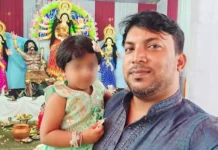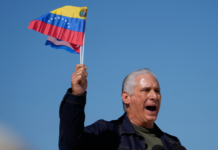
SEOUL: North Korean leader Kim Jong Un will make a historic visit to Seoul “in the near future”, he said Wednesday after a summit with the South’s Moon Jae-in in Pyongyang.
Moon — who went North looking to bring fresh momentum to the stalled effort to eliminate Pyongyang’s nuclear weapons — said the trip could happen this year unless there were “special circumstances”.
Moon added that the North had agreed to “permanently close” a missile engine testing site and launch facility in Tongchang-ri, “in the attendance of experts from relevant nations”.
The North has carried out several missile test launches from Sohae in the area — its ballistic missile programme is banned under UN Security Council resolutions — but has also used many other locations to fire rockets, including Pyongyang airport.
Satellite pictures in August suggested workers were dismantling an engine test stand, in line with a promise already made to US President Donald Trump.
Moon also said the North could close its Yongbyon nuclear facility if Washington takes “corresponding measures” — a significant caveat.
And arms control expert Jeffrey Lewis said the consensus view was that its uranium enrichment facility “was built for (the) express purpose of being sacrificed”, tweeting that he presumed the North had “at least one more” production site.
After the high symbolism of the two leaders’ first meeting in April in the Demilitarized Zone that divides the Korean peninsula, and Kim’s historic summit with US President Donald Trump in Singapore in June, progress has largely stalled.
In Singapore, Kim declared his backing for the denuclearisation of the peninsula, but no details were agreed and Washington and Pyongyang have since sparred over what that means and how it will be achieved.
Washington is pressing for the North’s “final, fully verified denuclearisation”, while Pyongyang wants a formal declaration that the 1950-53 Korean War is over and has condemned “gangster-like” demands for it to give up its weapons unilaterally.
A Seoul visit by Kim would be the first by a Northern leader since the partition of the peninsula decades ago after the end of the 1950-53 Korean War.
Seoul and Pyongyang have both been keen to promote inter-Korean ties, with Kim looking to secure cooperation from the far wealthier South in economic projects, and Moon looking to reduce the risk of a US-North Korean conflict that would devastate his country.
The Rodong Sinmun newspaper, the mouthpiece of the North’s ruling party, has given the summit blanket coverage, with 35 photos over the first four of its six pages.
On the front, there was a photo of the two leaders shaking hands and hugging each other upon meeting at Pyongyang International Airport on Tuesday, with more inside of them parading together through the streets of the city, enjoying a concert and toasting at a banquet.
Pyongyang has been keen to promote an image of modernity and togetherness, reflected in several aspects of the programme.
On Wednesday evening, Moon and his party will have dinner at the newly-opened Taedonggang fish restaurant on the banks of the eponymous river that flows through Pyongyang.
It stands opposite Mansu hill, where giant statues of Kim’s predecessors — his grandfather Kim Il Sung and father Kim Jong Il — look out over the city.
The destination was chosen after Moon expressed interest in dining at a local restaurant with ordinary citizens.
But a retail shop at the complex sells North Korean caviar at 50 for a 50-gramme jar — a luxury far beyond the reach of most North Koreans.
Afterwards, Moon will attend a performance of the “Mass Games” — North Korea’s spectacular, all-dancing propaganda display.
The show features tens of thousands of performers against an ever-changing backdrop made up of 17,490 children turning the coloured pages of books in sequence to send images rippling across one side of the May Day stadium.
The premiere of the latest version of the show, called “The Glorious Country”, earlier this month featured video footage of Moon and Kim together at their first summit in Panmunjom — prompting the unusual sight of tens of thousands of North Koreans applauding images of the South’s president. AFP







